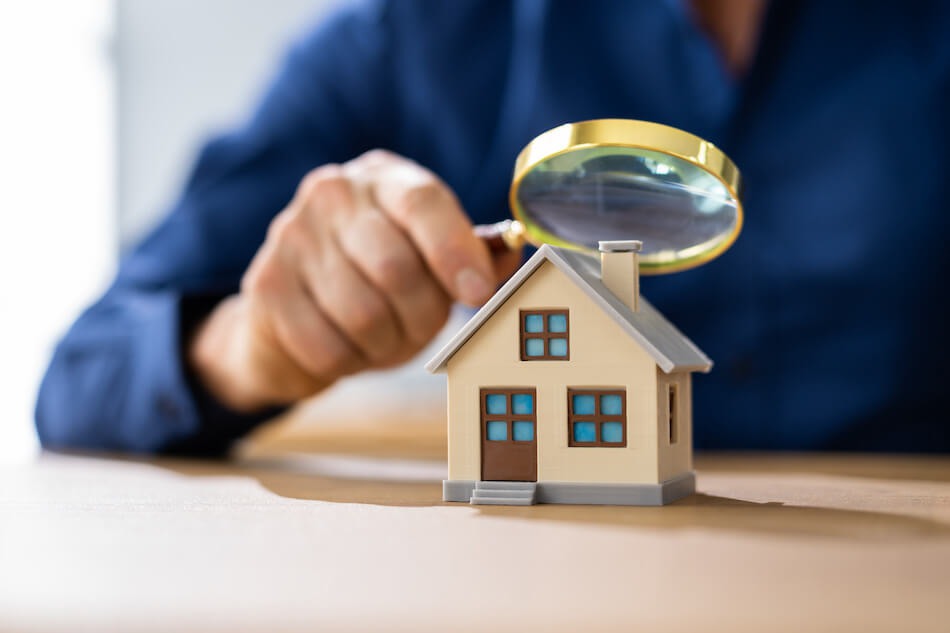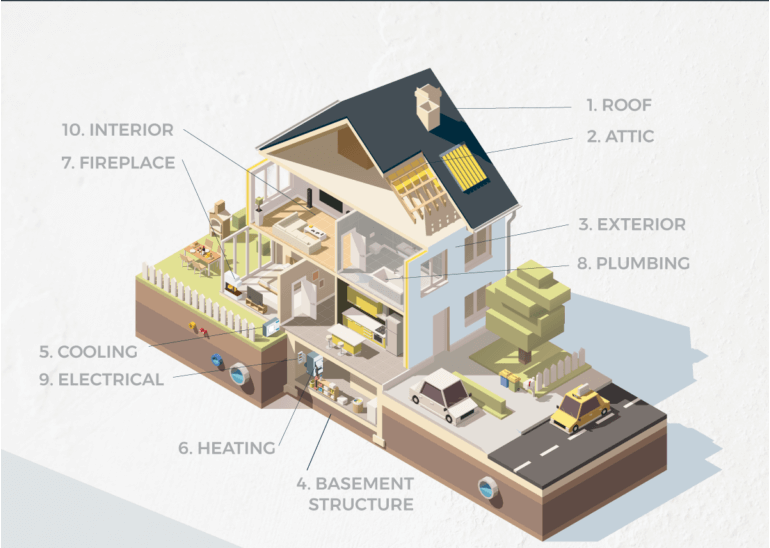Simplify Your Buying Process with Expert Home Inspection Lockhart Insights
What to Anticipate From Home Examination: a Detailed Checklist and Its Relevance
Understanding what to expect from a home examination is necessary for both customers and vendors in the genuine estate market. A detailed examination offers a comprehensive checklist that assesses essential elements such as structural integrity, significant systems, and total building problem.

Significance of Home Inspections
The relevance of home assessments can not be overemphasized, as they work as a critical safeguard for both buyers and sellers in the realty market. For purchasers, a home evaluation supplies an objective analysis of the property's condition, disclosing possible concerns that might not be noticeable throughout a laid-back walkthrough. This process helps buyers make informed decisions and bargain repairs or rate changes before closing, eventually safeguarding their investment.
Conversely, vendors can profit from home inspections by resolving concerns proactively prior to noting their home. This can enhance the home's marketability and possibly accelerate the sales process. A pre-listing evaluation can also infuse self-confidence in prospective buyers, as it shows transparency and a commitment to keeping the residential property.
Additionally, home examinations add to the general safety and habitability of property homes. In recap, home evaluations are an essential element of actual estate transactions, supplying crucial understandings that promote trust and transparency amongst all events involved.
Secret Elements of the Checklist
A detailed home examination checklist includes a number of key components that make sure a thorough examination of a property's condition. The very first element is the architectural honesty, which includes the evaluation of the foundation, wall surfaces, and roof covering for any signs of damage or degeneration. Next off, the list addresses significant systems such as pipes, electric, and HVAC, examining their performance and safety and security.
An additional critical area is the exterior of the home, which involves inspecting siding, home windows, doors, and roof products for wear and possible leakages. The list additionally covers indoor components, consisting of floor covering, wall surfaces, ceilings, and insulation, to determine any type of problems that may impact comfort or safety and security.
Additionally, the checklist typically includes an assessment of home appliances, ensuring they are in good functioning order. The inspection must examine outside spaces, consisting of driveways, patios, and decks, to assess their problem and safety and security. Each of these parts plays a crucial role in giving an extensive understanding of the residential property, eventually assisting potential customers in making educated choices about their investment.
Usual Issues Located
Typically, home inspections disclose a selection of concerns that can vary from small fixings to considerable safety worries. One prevalent concern is the presence of water damages, frequently originating from leaky roof coverings, pipes failures, or not enough drain systems. Such damages can result in mold and mildew growth, which presents health dangers and might need substantial remediation.

One more usual finding includes electric systems. Outdated electrical wiring, overloaded circuits, or incorrect grounding can produce fire hazards and require instant focus. Additionally, problems with cooling and heating systems, such as inadequate maintenance or age-related inadequacies, can impact comfort and power costs.
Architectural concerns like broken structures or endangered framing are also often kept in mind. These concerns can lead to major repercussions otherwise resolved promptly. In addition, bugs such as rats or termites may be found, indicating the capacity for considerable residential property damage.
Last but not least, the problem of doors and home windows often comes under analysis. Poor seals can lead to energy loss, while harmed frameworks or glass can affect security and appearances. Recognizing these usual issues during a home inspection is vital for informed decision-making and guaranteeing the security and durability of the residential property.
Getting Ready For the Examination
Preparation is crucial for an effective home inspection, guaranteeing that both vendors and customers can browse the procedure with confidence. Begin by arranging the evaluation at an equally practical time, allowing for adequate accessibility to the property. For sellers, it is recommended to declutter and clean up the home completely, as a clean setting can positively affect the assessor's evaluation.

For customers, see page preparing requires assembling a listing of specific concerns or areas of interest to review with the examiner. By taking these primary actions, both parties can establish the stage for a reliable and thorough home examination experience.
Post-Inspection Actions
After the assessment is full, both customers and vendors should take certain activities to deal with the searchings for. For customers, the first step is to thoroughly evaluate the evaluation report, noting any type of major issues that may affect their decision.
Vendors, on the various other hand, must analyze the findings to identify which problems they can deal with prior to completing the sale. Repairing small why not try here repairs can enhance the residential property's allure and possibly cause a greater sale cost. Vendors might select to disclose issues to possible customers, promoting transparency and trust.
In instances where substantial fixings are required, both events might profit from acquiring estimates or quotes from certified specialists. This enables for informed conversations pertaining to repair service obligations. It is important for both customers and sellers to keep open lines of interaction throughout this process to ensure a smooth purchase. By taking these post-inspection actions, both parties can browse the negotiation landscape with self-confidence and clarity.
Final Thought
Home inspections function as an important component in the genuine estate purchase process, making sure a comprehensive examination of a residential or commercial property's problem. By adhering to a comprehensive list, prospective problems can be recognized, safeguarding the rate of interests of both purchasers and vendors. Attending to these problems not just enhances security and habitability but also aids in economic negotiations. Eventually, the value of home examinations can not be overstated, as they promote informed decision-making and contribute to a smoother property experience.
For purchasers, read what he said a home assessment gives an impartial evaluation of the home's condition, exposing prospective problems that might not be noticeable throughout a laid-back walkthrough.On the other hand, sellers can benefit from home evaluations by dealing with issues proactively before noting their home (Home Inspection Lockhart).Typically, home evaluations reveal a selection of concerns that can range from minor fixings to substantial security issues. Determining these common issues throughout a home examination is vital for educated decision-making and making sure the safety and durability of the home
Preparation is essential for an effective home examination, making sure that both buyers and sellers can navigate the procedure with self-confidence.